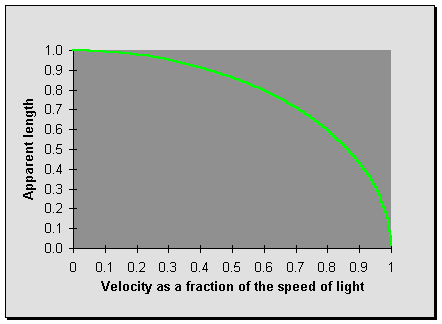
Charon: The Grim Ferryman
It was a custom in many parts of Ancient Greece -as we now call it- to insert an obol, equal to one-sixth of a drachma, into the mouth of a person as he/she was dying. The dead person's shade needed that money to pay Charon, the ferryman charged with transporting souls across the River Styx into the Plains of Asphodel. If the payment was not tendered, the person wouldn't suddenly awaken back to life. Instead, his/her shade would loiter forevermore along the shore: a lonely, desolate place, even by Underworld standards. In fact, the prospect of being confined to the Stygian shore engendered a morbid fear in almost everyone. Such a fate befell those who either didn't possess an obol or who were left unburied. (It was partially for this reason that Antigone buried her brother Polyneices in defiance of Creon's edict.) A soul capable of tendering payment was permitted to climb into the ferry with the other shades, which Charon would then convey across the river.
Anyone who expected the ferryman to mitigate their distress with kindness and compassion would have been disappointed. Not that anybody tried to elicit his sympathy, of course. As he was the son of Erebus (darkness) and Nyx (night), Charon exhibited dark moods perfectly suited for his vocation. He quietly rowed the ferry back and forth many times each day to collect the crowds of recently departed souls destined to forever remain within the Underworld.. Because this chore consumed almost all of his time, he figured very little in any mythological saga. Although once, when Heracles needed to access the Underworld in order to abduct Cerberus (and complete his final labor), Charon refused to permit him entry on the grounds that Heracles was still alive. Heracles flew into a frightful rage and threatened Charon with grievous bodily harm if he didn't ferry him across the river. (As its waters induced an enervating effect on even the strongest swimmers, Hercules knew better than to swim across Styx.*) Charon remained obstinate, for he secretly feared Hades' wrath more than Heracles'. Heracles then leapt into the boat and said that he would row it across the river himself, toss Charon into the water and then demolish the boat at the opposite shore if he didn't comply with his wishes. This latest threat finally induced Charon to ferry Heracles across the river. He later had to convey Heracles, the dreaded Cerberus and Theseus back to the other shore, much to his chagrin. (Heracles had pulled Theseus off the "Chair of Forgetfulness" after arriving in the Underworld. Theseus had been sitting insensibly in this chair since his failed effort to kidnap Persephone. Hades allowed Heracles to rescue Theseus, but not his co-conspirator Pirithous.) As Charon feared, when Hades learned of the ferryman's involvement in Heracles' infiltration, he was furious. He bound Charon in chains and forced him to remain in fetters for an entire year. After his imprisonment ended, Charon resumed his duties and never again dared to incur his boss' anger.
*Yes, Thetis did render her son Achilles invulnerable -except for the heel- by dipping him in the River Styx. However, the infant Achilles didn't swim the river. He merely entered it for a fleeting moment.
THE SOUTHWORTH PLANETARIUM
207-780-4249 www.usm.maine.edu/planet
70 Falmouth Street Portland, Maine 04103
43.6667° N 70.2667° W
Altitude: 10 feet below sea level
Founded January 1970
Julian Date: 24591123.16
2020-2021: XXI
THE DAILY ASTRONOMER
Wednesday, September 30, 2020
Special Relativity III - Length Contraction
Earlier this week we discussed two startling phenomena related to Special Relativity: time dilation and mass increase. When vessels move very quickly, time aboard it dilates and its inertial mass increases. These effects are only noticeable at relativistic speeds, generally about half the speed of light. Today, we discuss another strange consequence of relativistic motion: length contraction.
When a moving object passes a stationary observer, the object will appear to be compressed from the observer's perspective. Its length will actually contract. The degree to which this contraction occurs depends on the velocity. The higher the velocity, the greater the contraction.

The above graphic relates the object's velocity to its corresponding length contraction. Notice that at low speeds, up to 0.2c (20% light speed), the length contraction amount is negligible.It becomes rapidly more significant as the velocity approaches light speed. If a vessel did attain light speed, its length would be reduced to zero. Of course, as we learned yesterday, no massive object can attain light speed. We should point out that the length contraction occurs only along the motion direction: refer to the graphic below.

We're seeing the effects of relativistic length contraction at various speeds. At the far left, a ball as seen at rest. The next object shows the ball moving at 86.6% light speed. At this velocity, the ball's length has contracted to one half its original value. To the right of that image we see a ball moving at 99.5% light speed. At that velocity, its length has been reduced to one-tenth its original value. Finally, at the far right, the ball is moving at light speed and its length is zero.
Let's put all these effects together. Imagine that you're piloting a spacecraft capable of achieving relativistic velocities. Let's also further assume that your ship moves at 90% light speed. What would you actually experience? Well, while on board the spacecraft you wouldn't notice anything unusual. You would interact with your peers and go about your affairs just as you would were you at rest. Your engineers would indicate an increased difficulty at attaining even higher speeds due to the increased inertial mass. Also, when you finally returned to Earth after having been traveling at that velocity, you would certainly notice the time difference. Let's say that you were traveling for an entire year -from your perspective- at 90% light speed. When you returned, you would realize that two and a half years had elapsed on Earth.
All of these effects are consequences of the fundamental postulate:
The speed of light is constant in all inertial reference frames.
We write that sentence in bold print each time to emphasize its importance. As mentioned on Monday, Special Relativity is based on light speed. Tomorrow, we'll discuss how humans were able to determine that light travels at a finite speed and to ascertain that value.
To subscribe or unsubscribe from the Daily Astronomer: